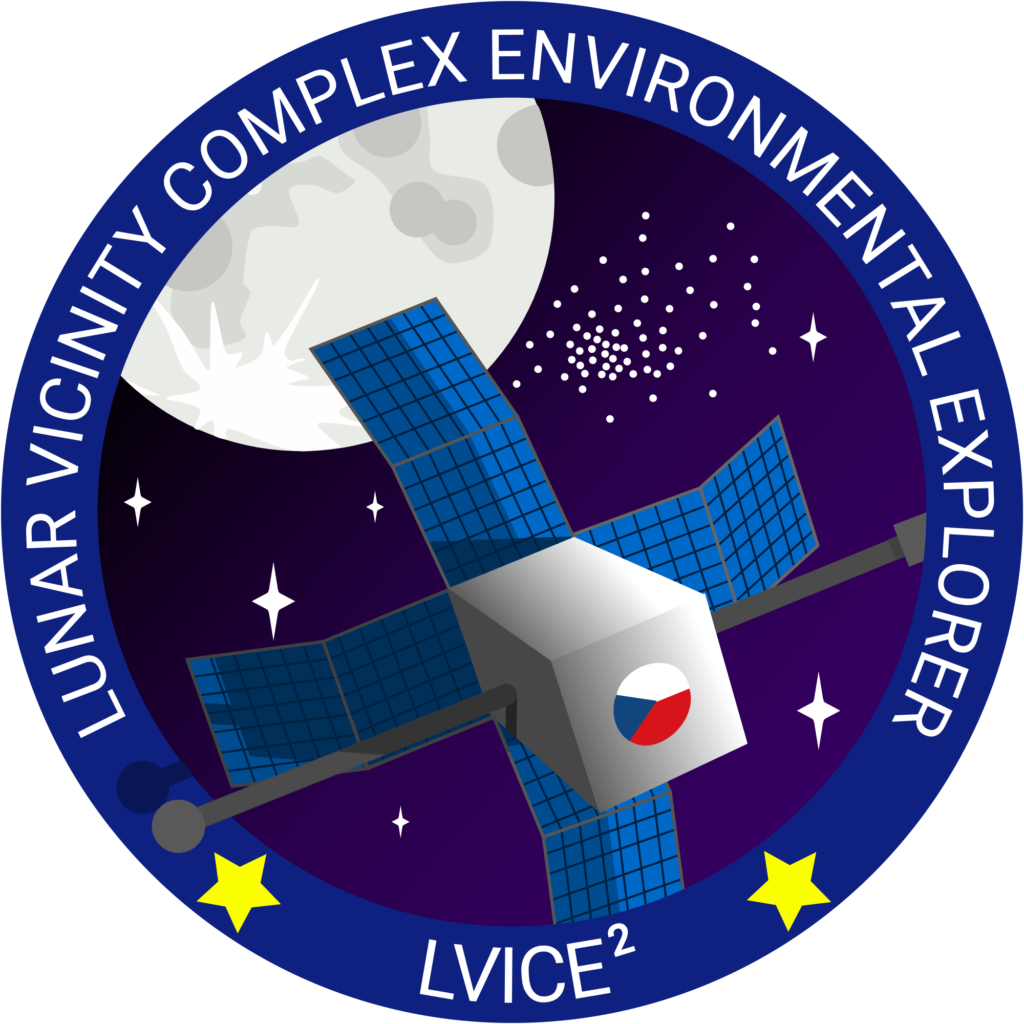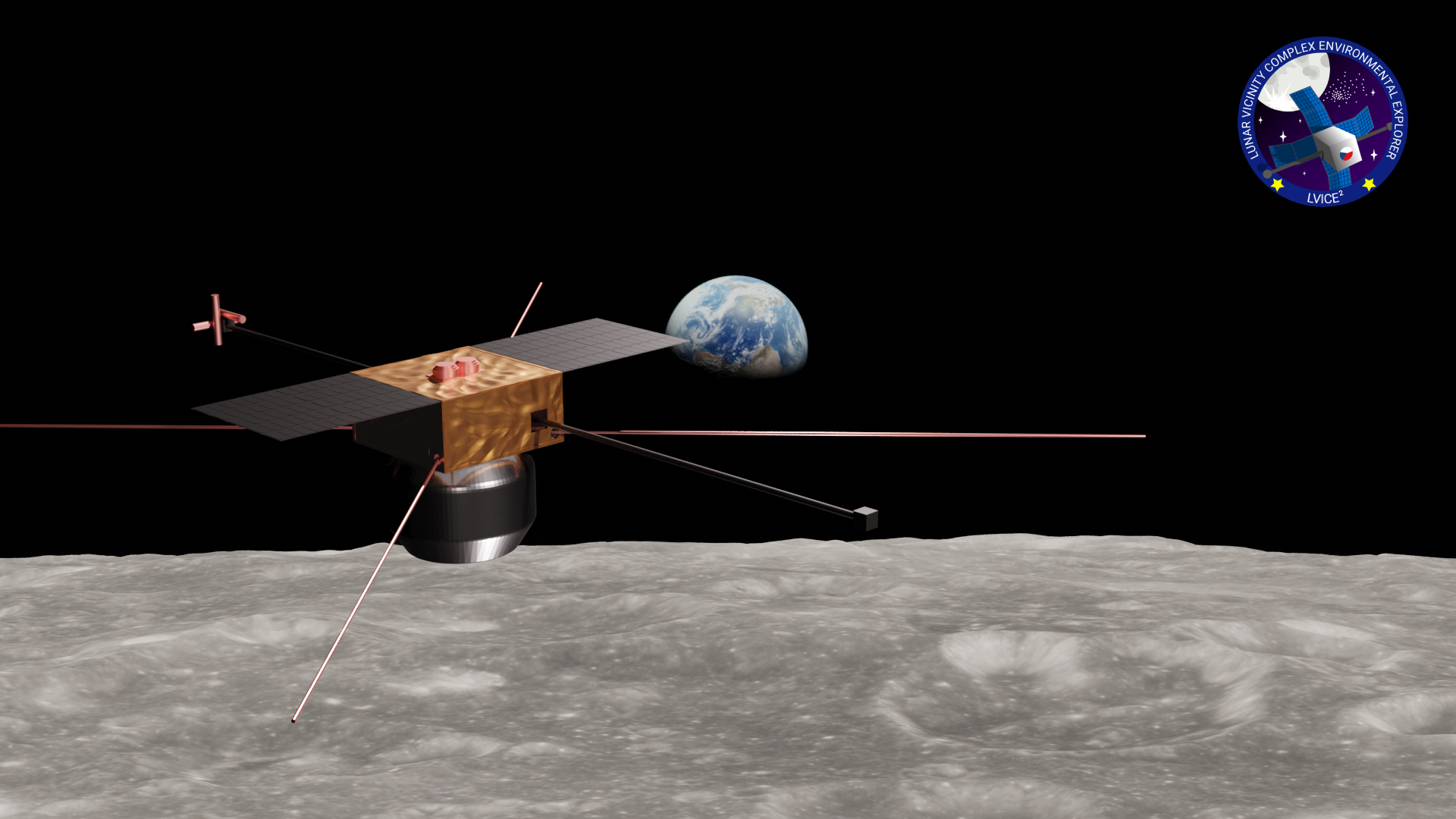The development of the largest Czech spacecraft LVICE² with its own propulsion has advanced to the next phase of the project. The lunar probe with a number of Czech scientific instruments has grown in size and other Czech aerospace companies have joined in its preparation.
The LVICE² project has now successfully completed the so-called "Phase A" review by the European Space Agency (ESA), when the mission's feasibility was verified and the requirements for its technical implementation were approved. By meeting this milestone, the Preliminary Requirements Review (PRR), the project has demonstrated that it can meet the scientific objectives of the mission using the proposed spacecraft and that its development is on the right track.
LVICE² is therefore entering the so-called "Phase B1", during which the design of the individual instruments on the probe and the interfaces between them will be developed and refined. This phase also includes the preparation of plans for the production, integration and testing of the probe. OHB Czechspace, which has extensive experience in space structures, is newly involved in this phase and will design the main structure for the probe.
In June 2023, the project will undergo another review by ESA, on the basis of which a panel of experts nominated by the Ministry of Transport will decide on the continuation of the mission. If production of the probe is given the green light, it should be launched into lunar orbit in 2027.
Mission overview
The lunar probe called Lunar VIcinity Complex Environmental Explorer (LVICE²) is being developed by a consortium of Czech companies led by esc Aerospace, one of the main providers of innovative space solutions in the Czech Republic. The mission aims to obtain scientific data on solar wind plasma turbulence, cosmic radiation and interplanetary dust concentrations around the Moon.
The preparation of the project is financed by the Ministry of Transport under the so-called ambitious projects programme. This programme aims to strengthen the role of the Czech space industry on a global scale and increase the reputation of Czech science in the field of space research. The LVICE² mission plans to fulfil these objectives by assembling a complex space probe with a number of scientific instruments, with most of the instruments on board being manufactured by Czech companies and institutions.
According to the original proposal, the mission objectives were to be met by a probe built to the popular Cubesat standard, which offers modular solutions for small satellites. The spacecraft was supposed to weigh about 20 kg and be the size of a desktop computer. However, due to the number of scientific instruments and other mission requirements, it was necessary to design a completely new, custom probe design. The planned probe is now close to the size of a washing machine and, once fuelled, will have a mass of around 120 kg.
Payloads on board
A number of academic institutions are involved in the development of scientific instruments for the spacecraft:
- The Institute of Atmospheric Physics (IAP) of the Academy of Sciences of the Czech Republic is building an instrument for measuring the alternating component of the plasma electromagnetic field
- The Nuclear Physics Institute (NPI) of the Czech Academy of Sciences is preparing instruments for measuring ionizing radiation
- The Faculty of Mathematics and Physics (FMP) of Charles University is designing an instrument to measure ion flux in the solar wind
- Faculty of Electrical Engineering (FEE) of CTU prepares a device for detection of DC component of plasma magnetic field
- The Faculty of Nuclear Science and Physical Engineering (FNSPE) of CTU is working on the design of an instrument for space dust detection and also on radiation detectors with the new SpacePix3 chip
This space probe differs from the other planned Czech satellites by having its own propulsion, which will allow it to reach the Moon and manoeuvre in its orbit. Stellar Exploration EU is involved in the development of this propulsion system, including the probe's electrical system.
The search for the best orbits to meet the scientific objectives of the mission is being carried out at the Faculty of Mechanical Engineering (FME) of CTU, where thermal simulations of the entire probe and its individual parts are being carried out. Computers on board are also an integral part of the spacecraft, as they will control the flight and process data from the scientific instruments. The design and manufacture of these on-board computers is being handled by esc Aerospace, which plans to supply these devices to other planned satellites.
The LVICE² project is very important to esc Aerospace and its partners. Its successful completion will be a groundbreaking achievement for the Czech space industry and will introduce the Czech Republic into a prestigious club of countries that can build their own probes to explore the solar system. The data collected by this probe will also be of great value to researchers around the world, providing valuable information about the lunar environment and helping to pave the way for future missions to the Moon.
Visual assets:
- Preliminary visualisation of LVICE², January 2023 (PNG, 1920 x 1080 px)
- Mission patch/logo (PNG, 2000 x 2000 px)
- esc Aerospace s.r.o. logo (JPEG, 2500 x 900 px)
- ESA logo (PNG, 3388 x 2127 px)
The press release in PDF can be found in Media.

